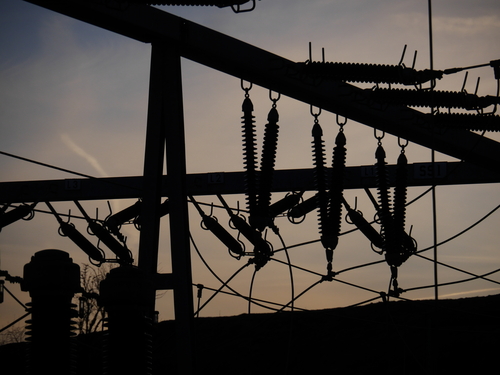The utility company said it began implementing so-called public safety power shut-offs Tuesday at 5 p.m. Pacific Time in small parts of 18 counties north of San Francisco in anticipation of wind gusts up to 40 miles an hour, conditions that can cause fires to rapidly spread. It had projected earlier on Tuesday that as many as 48,000 customers could lose power.
The proactive shut-offs, the company’s first so far this wildfire season, may last through Wednesday afternoon. The exact number of people who may be affected is uncertain but could top 150,000, based on census data on people per household in California.
More than 11,000 potentially affected customers reside in Butte County, where the Dixie Fire is raging. The fire has destroyed more than 600,000 acres in Butte, Plumas, Lassen and Tehama counties, making it the second-largest fire in California history. Earlier this month, the large fire burned much of the town of Greenville, about 115 miles northeast of Sacramento.
The fire may have started when a tree touched one of PG&E’s power lines, the company disclosed to regulators last month. A total of 6,579 fire personnel are assigned to the blaze, which is 31% contained, according to InciWeb, which shares fire reports from different government agencies. The fire is burning northeast of Paradise, which was destroyed in 2018 by a fire sparked by a PG&E transmission line. That wildfire, the deadliest in California history, killed 84 people.
“Current Red Flag conditions are creating extreme fire behavior on the #DixieFire. Do not hesitate if told to evacuate,” the Lassen-Modoc Unit of the California Department of Forestry and Fire Protection said on social media early Tuesday.
PG&E, which serves about 16 million people in Northern and Central California, is seeking to reduce the threat of wildfire throughout its 70,000-square-mile service territory. Its equipment has ignited more than 20 California wildfires within the past several years that have collectively killed more than 100 people and burned thousands of homes. Most of the fires were started when trees or branches touched the company’s wires.
The company sought bankruptcy protection in 2019 to address billions of dollars in liability costs stemming from fires sparked by its equipment. It emerged from chapter 11 last year after settling those claims for $25.5 billion.
Wildfire risk is especially high this year because of a crippling drought that has blanketed most of California. About 88% of the state faces extreme drought conditions, according to the U.S. Drought Monitor, up from roughly 3% this time last year. PG&E said that it may cut power in part because vegetation is extremely dry.
PG&E has resorted to proactively cutting power several times in recent years while working to trim more trees away from its power lines and make repairs throughout its system. Its first large shut-off occurred in October 2019, when it cut power to more than two million people, some for several days. Its chief executive at the time estimated that the company might have to resort to such measures for as long as a decade until it can operate the system safely during windstorms, though he said the company would narrow the size and scope of the outages over time.
The company has faced criticism in recent years from state politicians and regulators for causing havoc by deploying such shut-offs too widely. As a result, it has been working to narrow the scope of the outages. But PG&E’s equipment continues to pose hazards, and the failure to proactively shut off power lines that subsequently start destructive fires has the potential to pressure its balance sheet.
Last month, after disclosing that one of its power lines might have ignited the Dixie Fire, PG&E unveiled a plan to bury 10,000 miles of power lines at an estimated cost of up to $20 billion, reversing its earlier stance that doing so would be prohibitively expensive. The company, which hasn’t yet devised a timetable for the work, said that undergrounding will eventually reduce the need for proactive shut-offs.













